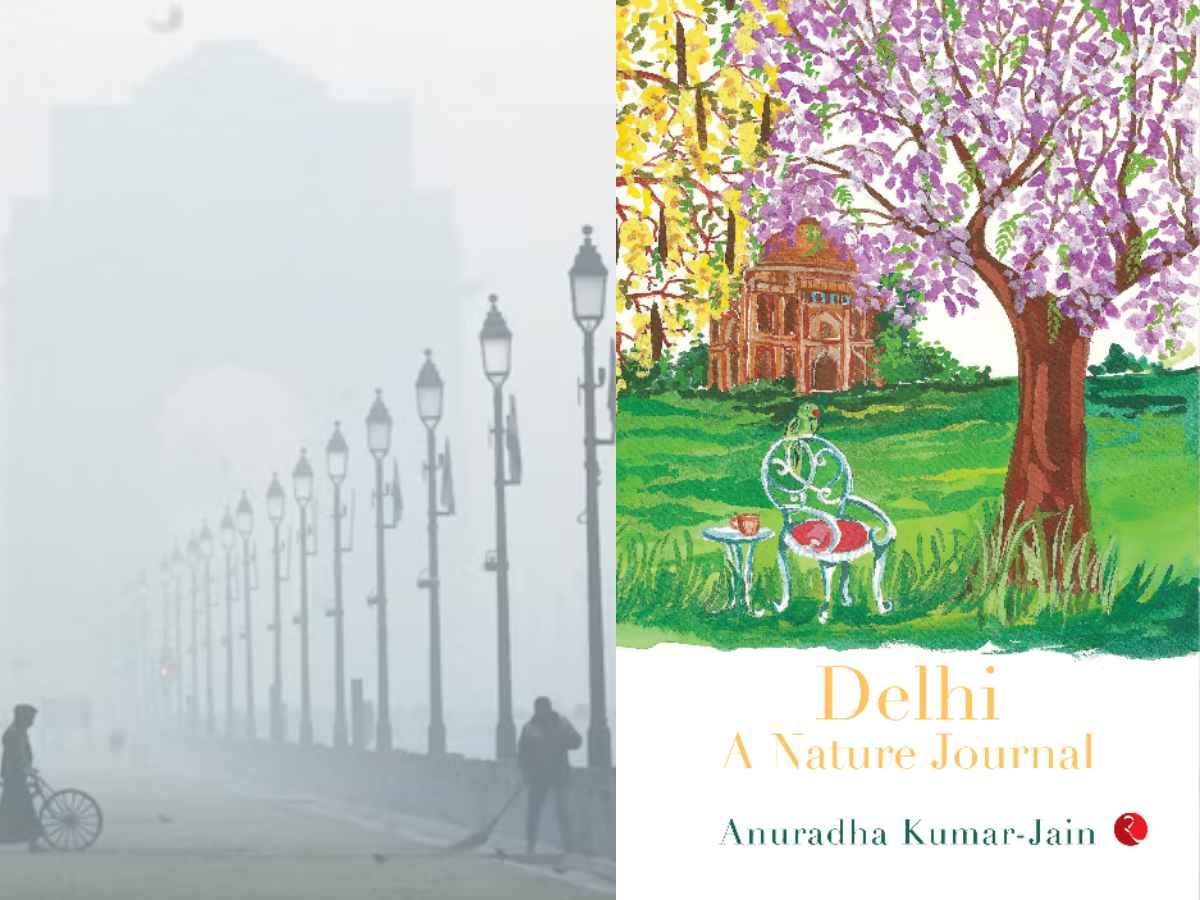
Book Review: It’s not easy to miss the magic of changing seasons in a bustling metropolis such as Delhi.
A new book by New Delhi-based writer Anuradha Kumar-Jain reads somewhat like a nature journal of the city, with diary entries of individual months and even particular dates of the year – featuring the trees, flowers, and birds that thrive in them.
Complemented by exquisite, colorful illustrations by Bahaar Meera Jain, the book makes the reader pause and notice the wonder of nature in the crammed capital.
“(Delhi) teems with life; its tree lined avenues, parks, wetlands, and private gardens support an amazing diversity of creatures and plants,” highlights Jain in the book’s Introduction.
The book reveals the little known fact that Delhi is one of the most avian-friendly cities in the world, with about 250 species of birds sighted on a single day. Jain also mentions that Lutyens’ Delhi is home to many big bats called flying foxes, most of which roost in their favoured old avenue trees of arjun, jamun, mango, and ficus.
Reading the book, it’s palpable what a keen naturalist Jain is. From time to time, she talks about the several varieties of flowers growing in her own garden, such as poinsettias, primulas, ranunculus, nasturtiums, sweet peas, larkspurs, lupins, antirrhinums, daisies, petunias, hibiscuses, and geraniums – and which ones bloom when according to the changing seasons.
Also read: Delhi: Introducing little ones to the stage
At her home, Jain has also hung bird feeders and water bowls, which are frequented by several birds, such as silverbills, sparrows, tailorbirds, and parakeets. She also evocatively describes the butterflies that appear in her garden one January afternoon: “Yellow orange tip, common gull, common emigrant, common grass yellow, red Pierrot, plain tiger, blue tiger, cabbage white, common Mormon, all flit about dancing from flower to flower. So many flutterbies!” she exclaims. Later in the month, she also discusses popular festivals celebrated in the month, such as Lohri and Makar Sakranti. In January, the author also visits the Sultanpur National Park on the outskirts of the city to see the migrant birds that are visible around this time of year.
Short-lived though it is, February is one of the best months to experience the city, when the weather is no longer too cold and not yet hot – but cool and very pleasant. The festival of Basant Panchami takes place this month, a sort of prelude to spring. “The fields are golden with sarson, the days are balmy enough for flying kites, gardens are full of flowers, and halwai shops are laden with mithai,” elaborates Jain.
According to her, a lovely tree to enjoy this month is the Hong Kong orchid tree, the most beautiful bauhinia of Delhi. March, the month of Holi and Maha Shivratri, is also the month of patjhad, when most deciduous trees, such as neem, pilkhan, harshingar, amaltas, peepal, and palash, shed their leaves – “painting the roads in shades of ochre and burnt sienna.”
In March, the author visits Chandu Budhera near Gurgaon, where she again spots a number of migratory birds.
Contrary to what most Delhiites feel, Jain explains that curiously, nature seems to love the onset of summer at the beginning of April. “Late March and early April sprinkle magic fairy dust everywhere, and suddenly there are signs of renewal and rebirth. Foliage is the main showstopper of April, rivalling more flamboyant flowering trees and shrubs,” she writes.
At this time, Delhi is aglow with pilkhan, anjeeri, and peepal trees. This is also the time for fig trees, and apparently, fourteen different varieties of figs grow in the city, with each one prettier than the other. In April, Jain also talks about Baisakhi, a harvest festival that has special significance for the Sikhs.
Further, Jain finds something positive in May’s scorching heat too. “Despite the lamentable weather, May paints the city with broad brush strokes of saturated color; the yellow of amaltas, deep red of gulmohur, pink of jarul, and lilac of jacaranda dazzle against a blue sky!” she muses.
Moreover, May is also the start of the mango season in the city, she adds.
Similarly, Jain notes that despite the unrelenting heat of June, interestingly the birds are busy raising their families, and nature goes about its business as usual.
For Jain, July and August, the city’s sensory rainy months, are great for gathering clouds to drift through one’s imagination as well as relishing a hot cup of adrak chai with pakodas. In October, she spotlights Phool Walon Ki Sair, a weeklong festival unique to Delhi, when florists, shehnai players, and dancers lead a procession to Mehrauli, where floral fans are offered.
Also read: Recalling the Bollywood showdown for New Delhi: Kaka vs Shotgun
Though smoke-filled and hazy, November is a kind of transition between autumn and winter, and Diwali usually falls in this month, making it a time for celebration. The festive mood continues through December right up to the New Year.
“Contrary to popular thought, an urban landscape, even one as congested as Delhi, can become a nature lover’s delight. The trick is to choose what you see,” aptly concludes Jain.
Police said despite sustained efforts, the accused remained at large and kept changing locations and…
At a debut solo exhibition in Delhi, an architect-artist explores sand, memory and movement through…
Om Taneja (81) and his wife Indira (77), a doctor, were kept under “digital arrest”…
The court observed although appellant had caused death by rash and negligent act, sending him…
AAP leaders were detained during a protest against the BJP over an alleged doctored video…
NDMC is rolling out a G20-style upgrade of roads, lighting and cleanliness to prepare Delhi…